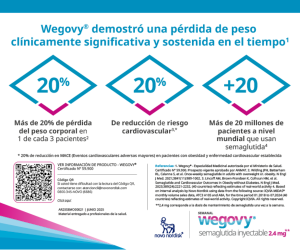Pathogenesis. Risk factors in diabetes mellitus
DOI:
https://doi.org/10.47196/diab.v53i1.140Keywords:
urothelium, uropathogen, tamm horsfall glycoprotein, glycosylation, uroplakinsAbstract
Interaction between urothelium and uropathogen, the basis of the pathogenesis of urinary tract infections (UTIs), can lead to bacterial elimination by the host cell or bacterial invasion and multiplication. Inside the host cell, uropathogens can impair defenses and resist antibiotic treatment. In patients with diabetes, especially diabetes-related kidney disease, a reduction in the inhibition capacity of bacterial adherence to the urothelium has been demonstrated; therefore, a highest chance of bacterial invasion. The glycosylation of all elements of the immune system, including the lower release of factors such as interleukins at the urinary level and the impairment of bladder emptying by autonomic neuropathy, enhance the development of this type of infections.
References
Flores-Mireles AL, Walker JM, Caparon M, et al. Urinary tract infections: epidemiology, mechanisms of infection and treatment options. Nat Rev Microbiol 2015; 13(5): 269-84.
Taganna J, Boer AR, Wuhrer M, et al. Glycosylation changes as important factors for the susceptibility to urinary tract infection. Biochem Soc Trans 2011; 39(1): 349-54.
Rampoldi L, Scolari F, Amoroso A, et al. The rediscovery of uromodulin (Tamm-Horsfall protein): from tubulointerstitial nephropathy to chronic kidney disease. Kidney Int 2011; 80(4): 338-47.
Bleyer AJ, Kmoch S. Tamm Horsfall glycoprotein and uromodulin: it is all about the tubules! Clin J Am Soc Nephrol 2016;11 (1): 6-8.
Chakraborty J, Below AA, Solaiman D. Tamm-Horsfall protein in patients with kidney damage and diabetes. Urol Res 2004; 32(2): 79-83.
Fünfstück R, Nicolle LE, Hanefeld M, et al. Urinary tract infection in patients with diabetes mellitus. Clin Nephrol 2012; 77 (1): 40-8.
Casqueiro J, Casqueiro J, Alves C. Infections in patients with diabetes mellitus: a review of pathogenesis. Indian J Endocrinol and Metabo 2012; 16 (Suppl 1): S27-36.
Nitzan O, Elias M, Chazan B, et al. Urinary tract infections in patients with type 2 diabetes mellitus: review of prevalence, diagnosis, and management. Diabetes Metab Syndr and Obes. 2015; 8: 129-136.
Geerlings S, Fonseca V, Castro-Díaz D, et al. Genital and urinary tract infections in diabetes: impact of pharmacologically-induced glucosuria. Diabetes Research and Clinical Practice 2014; 103(3): 373-381.
Stapleton AE. Urinary tract infection pathogenesis: host factors. Infect Dis Clin N Am 2014; 28(1) 149-159.
Downloads
Published
Issue
Section
License

This work is licensed under a Creative Commons Attribution-NonCommercial-NoDerivatives 4.0 International License.
Dirección Nacional de Derecho de Autor, Exp. N° 5.333.129. Instituto Nacional de la Propiedad Industrial, Marca «Revista de la Sociedad Argentina de Diabetes - Asociación Civil» N° de concesión 2.605.405 y N° de disposición 1.404/13.
La Revista de la SAD está licenciada bajo Licencia Creative Commons Atribución – No Comercial – Sin Obra Derivada 4.0 Internacional.
Por otra parte, la Revista SAD permite que los autores mantengan los derechos de autor sin restricciones.




























